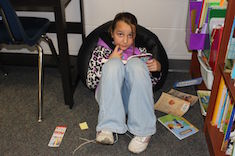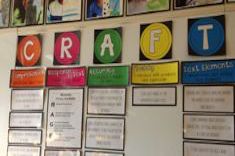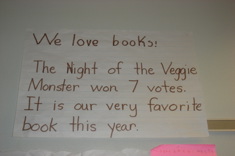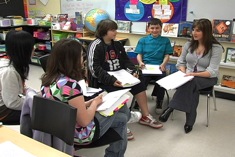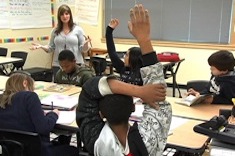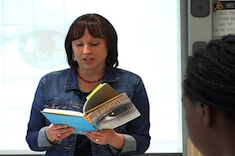Readers are made, not born. Few students spring out of the ground fully formed as readers. They need help, and we cannot assume that they will get it from home, but they should always get it from us, their teachers.
—Donalyn Miller
Each new school year begins with a long list of hopes and dreams for my students and for our learning year together. Some of these hopes and dreams shift and morph with each new batch of students, but one that stays constant for every year is this: I want each of my students to build a lifelong habit of book love. As with many worthy goals, this is easier said than done, and to achieve it I need to make sure (all year long) that the following building blocks stay firmly within our classroom routines:
Find Time for Read-Alouds
There is no one way to keep abreast of all the glorious new books that are published faster than we can ever hope to read them before passing them along to our students. During the school year, I can manage one chapter book and two picture books per week, which is but a small dent in the volume of new books available. The following blogs and Twitter chats are wonderful resources to learn of new titles, the gists of each book, and an informed educator’s view about these titles:
-
Teach Mentor Texts: Jen Vincent’s blog is the Monday gathering place for books. I love the variety of titles reviewed (preschool all the way to high school), and the thoughtful way educators share their views about appropriate audiences and discussion possibilities.
-
Nonfiction Wednesday: Alyson Beecher hosts this Wednesday meme, which focuses on nonfiction. I find this to be an amazing place to visit to gather book titles that cater to curiosity and wonder in my students.
-
A Book and a Hug: Barb Langridge’s blog is interactive. You can peruse a huge number of book reviews, as well as post reviews. Some of these reviews have been written (and written well!) by students, which is a great way to gain insight into how your own students will like and respond to a text.
-
The Nerdy Book Club: This is my daily dose of what’s new and fabulous in the kidlit world.
-
#titletalk is a Twitter chat hosted by Donalyn Miller and many of the Nerdy Book Club contributors on the last Sunday of the month. I lurk here religiously, and learn of many new titles and literacy resources for teachers. I love the way conversations about books loop into and around larger conversations about literacy and its best practices. One learns so much more than just about new books.
Getting Organized
Over the many years of my teaching life, I’ve collected more than 1,500 books across many genres. I’ve tried sorting them by catchy subcategories (“books with brave guys and girls!” “books where the hero goes on a terrifying quest!”), but these systems were hard to maintain and led to books being stuck any which way upon return because my kids couldn’t remember where they had found them in the first place. So, we’ve returned to basic, generalized genre baskets with just a few “specialized” ones we can keep track of more easily:
-
#5BookFriday Selections
-
Books Like Our Current Read-Aloud
-
Brand-New Books
Book-Tracking Form
Sorting and situating books is far easier than keeping track of who has checked out what book and whether they have returned it. This simple checkout system serves two purposes. It is our running record of the books students have checked out, and it gives me insight into my students’ reading habits: the genres they tend to gravitate toward, how long it took to read their books, and the books they tend to abandon. Here’s a blank copy.
Here’s one in use, and marked up for my teaching purposes:
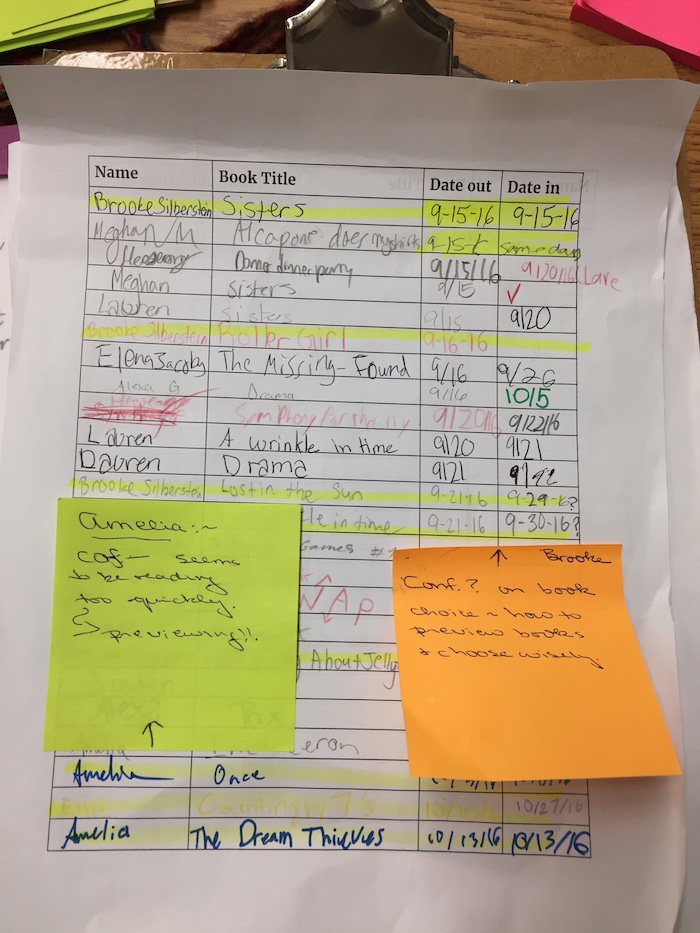
This single form becomes one I can use for multiple teaching purposes.
#5BookFriday
Three years ago when she was a fifth-grade teacher, Katie Mutahris established a Friday tradition that still endures in our classroom. Five students sign up to book-talk books they have just read, and each presents an enticing synopsis to the class every Friday of the school year. Photographs are taken and posted on our #5BookFriday All Star bulletin board, and treats are given to those who sign up to share—it is a very big deal!
Sometimes book talks are done as student-created book trailers, which can then be shared on our Google Classroom book-talk page—a collection of reviews from our classroom that serves as a place to consult for reading ideas. Most often, students do a little write-up of the book in preparation for their #5BookFriday book talk, and this is uploaded onto our book talk Google Classroom.
Having a class Twitter account is an easy and effective way for students to connect with writers and learn about new books. We tweet on Fridays, right after our #5BookFriday book talks, when our energy and excitement is high. YA authors are kind about favoriting and/or responding to tweets, which adds to my students’ engagement in the reading process. I’ll never forget when Lois Lowry tweeted a response to a student’s question within a matter of days—we just had to sit back and reflect on that for a while. Lois Lowry, THE Lois Lowry, had answered! It’s moments like this that make lifelong readers.
Preview Stacks
In her books The Book Whisperer and Reading in the Wild, Donalyn Miller suggests the notion of curating “preview stacks” for our students—i.e., choosing four or five books that might be of interest to our students, rather than making one single suggestion. This practice helps our students learn how to do what all readers must do: sort through options and make intentional choices.
In our sixth-grade class, we learn how to gather book stacks, sort through choices, and zero in on the one to read. I model this at the beginning of the year, and find that my kids get very used to the habit of curating for themselves and for their classmates. It becomes common practice before long—a habit, even, for students to use this process every time they are in the market for a book to read. By the end of the first marking period, students have learned this process so well that they use it to recommend books to their classmates.
Building a community of readers is painstaking work, but having a set of tried-and-true routines in place helps us focus on those practices that require even greater time and effort: conferring, and small-group work. A classroom library should run smoothly, and its routines should foster agency and independence in the reading lives of the students who make use of it every day of their school-going lives.

